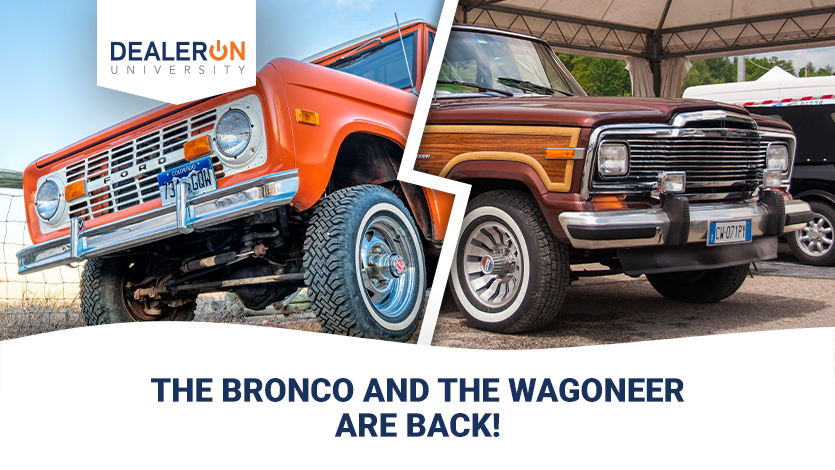

More than any other consumer good, our cars are an expression of our identities. That’s why, when a discontinued model rises Lazarus-like from the grave, it’s news. Both Ford and Fiat Chrysler are bringing back two famous SUVs that were last seen in the ‘90s, trying to recapture their past glory. Both companies have revealed the direction they’re going, but whether the redesigned vehicles will catch on is anyone’s guess.
For a vehicle that helped pioneer the concept of the SUV, it’s unfortunate that the Bronco is infamous for a slow-speed chase. Rest assured, that’s not why the model was discontinued in 1996, but rather because it was no longer reflective of where the SUV market was going. Still, it was a stunning achievement, lasting for a whopping 31 years—and now poised to add to that total.
When the Bronco debuted, it was intended as more of an off-roading outdoorsy kind of vehicle, sort of like a pickup truck specifically intended for camping. Unsurprisingly, it caught on. In a sign of things to come, as demand shifted for more on-road functionality, demand for the Bronco dropped off somewhat in the early ‘70s. This was what eventually led to it being discontinued: by 1996, the SUV was no longer an outdoorsman’s vehicle. It had become the default way for a family to get around. Its bulky shape meant safety for the passengers, and cheap ‘90s gas meant you could still commute in it. While the Bronco could do this kind of thing, other models did it better, and had been marketed that way from the beginning.
The Bronco that’s coming back is an unabashed return to the first generation the model. While there is updated styling, the basic shape calls to mind the original Ford Bronco Wagon, and both the circular headlights and grille shape are retro flourishes. The message is clear: the Bronco is going back to its roots. It’s built to go off-road and it features removable doors for ease in camping. In other words, this is emphatically not intended for a suburban family taking Junior to soccer practice. Unless soccer practice is on the alkali flats or something.
The open question is, “Is there a market for a vehicle like this right now?” I don’t have the answer there. With its almost toy-like design and the clear implication that this isn’t intended as the primary vehicle for an individual, it seems more like a specialty piece. Here’s what I will say: no one working anywhere close to this business wants to doubt Ford.
Fiat Chrysler, bringing back the Jeep Wagoneer, is also trying to return to form. Debuting two years before the Bronco and going into hibernation in 1993, the Wagoneer was considered the first luxury SUV. As anyone who’s seen a professional athlete go anywhere knows, the Wagoneer is far from the only luxury SUV on the market. So for a vehicle that largely invented its own market, it’s a bit stunning that it was forced out, and partially by Jeep’s own Grand Cherokee!
The new Wagoneer is leaning in hard to its status as a luxury brand, featuring a sticker price bound to give the vast majority of people reading it palpitations. Brace yourselves. On the low end, a bare-bones model will run you $60,000 while the fully loaded version is a cool 100 grand. Chances are, if you’re looking for a luxury SUV, price isn’t your biggest concern. Or you’re looking for a big enough one to impress.
The luxury SUV market is a small one, but it’s also highly profitable (make of that what you will), so it’s no wonder Fiat Chrysler wants back in. In some ways, the Wagoneer is facing a similar challenge as the Bronco: how many people want this thing? Fiat Chrysler is betting that enough customers will be lining up that this costly gamble will pay off.
From a branding perspective, the question remains over how valuable the model names are. Will customers buy these vehicles because they’re good, or because of lingering affection for the original models? That kind of thing is nearly impossible to tell, but in both cases, Ford and Fiat Chrysler think the name is valuable. Keep an eye on both of these vehicles, because how they do will reveal a lot about not just branding, but the power of nostalgia and the durability of memory.


